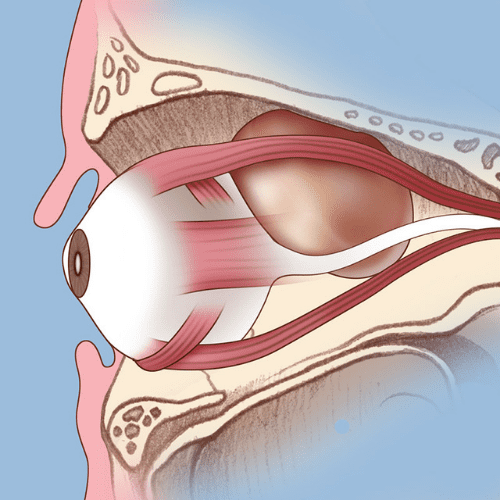ÉVISCÉRATION ET ÉNUCLÉATION |
De multiples tumeurs orbitaires peuvent se développer au niveau de l’orbite, elles peuvent être bénignes ou malignes.
Les lésions les plus souvent retrouvées sont l’hémangiome caverneux (tumeur bénigne) et le lymphome orbitaire (tumeur maligne).

La lésion orbitaire pourra comprimer les structures adjacentes et être responsable d’une exophtalmie (œil poussé vers l’avant), de trouble de la mobilité oculaire, vision double ou douleurs rétro-orbitaires.
Le traitement des lésions orbitaires dépend de la nature de celle-ci, une biopsie ou une exérèse sous anesthésie générale sera réalisée à visée diagnostique et thérapeutique.

ÉVISCÉRATION ET ÉNUCLÉATION |

ORBITOPATHIE DYSTHYROÏDIENNE |

LIPOSTRUCTURES ORBITAIRES ET GREFFES |
| Cookie | Durée | Description |
|---|---|---|
| cookielawinfo-checkbox-analytics | 11 months | This cookie is set by GDPR Cookie Consent plugin. The cookie is used to store the user consent for the cookies in the category "Analytics". |
| cookielawinfo-checkbox-functional | 11 months | The cookie is set by GDPR cookie consent to record the user consent for the cookies in the category "Functional". |
| cookielawinfo-checkbox-necessary | 11 months | This cookie is set by GDPR Cookie Consent plugin. The cookies is used to store the user consent for the cookies in the category "Necessary". |
| cookielawinfo-checkbox-others | 11 months | This cookie is set by GDPR Cookie Consent plugin. The cookie is used to store the user consent for the cookies in the category "Other. |
| cookielawinfo-checkbox-performance | 11 months | This cookie is set by GDPR Cookie Consent plugin. The cookie is used to store the user consent for the cookies in the category "Performance". |
| viewed_cookie_policy | 11 months | The cookie is set by the GDPR Cookie Consent plugin and is used to store whether or not user has consented to the use of cookies. It does not store any personal data. |

